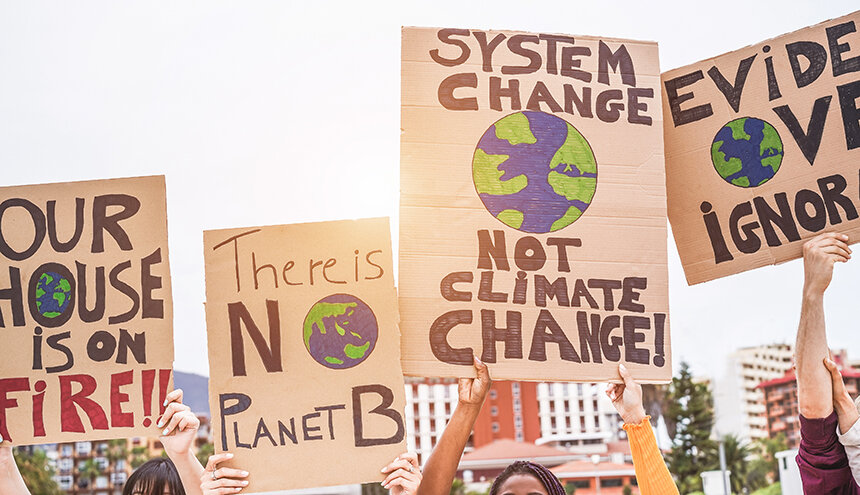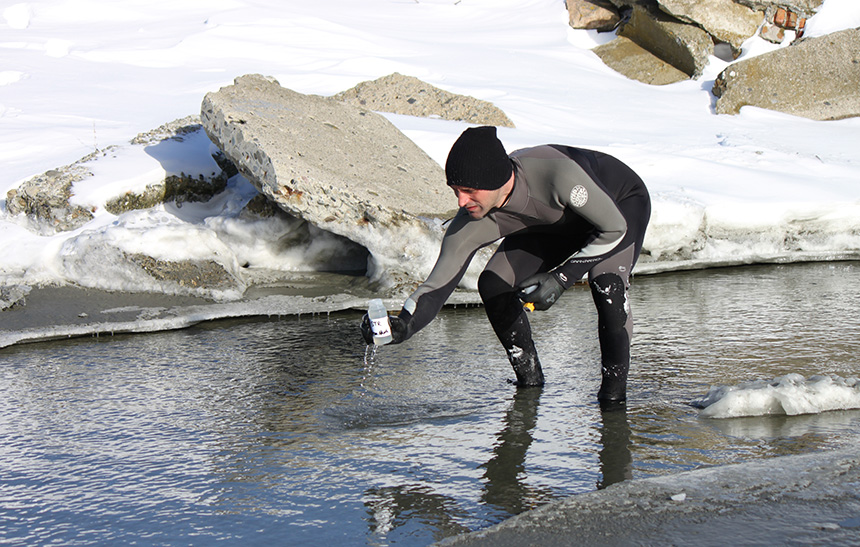City’s Nonchalantness to Contamination Frustrates Residents
September 6, 2010
PROVIDENCE — The latest assessment of the contamination buried on the former Gorham silver manufacturing site on the city’s South Side has done little to ease neighborhood concerns.
In fact, many Reservoir Triangle residents are weary of the endless studies and incessant talk about samples, especially when the last one was taken five years ago. The 37-acre site that stains their neighborhood is contaminated with industrial pollutants that have degraded soil and water quality. That fact hasn’t been disputed in the more than four decades since Textron Inc. bought the property and agreed to clean up the parcel to meet the state Department of Environmental Management’s industrial/commercial reuse standards.
Concerned neighbors are particularly frustrated by the continued dissection of data that is no less than five years old and the lack of clean-up efforts on a 5-acre site immediately to the west of a school that enrolls about 600 students.
A 38-page “health consultation” presented to the public at a meeting Aug. 30 by the Agency for Toxic Substances and Disease Registry, an Atlanta-based federal public health agency, found the site next to Alvarez High School — often referred to as Parcel C — poses an undefined public health hazard based on “environmental data gaps and uncertainties about future plans for the parcel.”
“The data we used was seven to ten years old,” said Tammie McRae, an environmental health scientist with the agency. “There was no current data of what is actually on Parcel C, so we couldn’t make a health assessment.”
However, to help alleviate neighbors’ fears, McRae told those gathered at the meeting that there are sites like Parcel C “all over the country.”
The city of Providence owns the polluted parcel next to the high school, but only one city official spoke at the meeting, City Council member Leon Tejada. He never mentioned Parcel C’s contamination problems, but he did tell the audience gathered inside Renaissance Church — one of two tenants in the derelict Adelaide Avenue strip mall that was built on a large chunk of the polluted Gorham site and is anchored by a now-vacant Stop & Shop — that a section of the parcel will be asphalted over and turned into a parking lot. The rest of the site, he said, would be used as soccer, baseball and softball fields.
Tejada made no mention of how the site — which features an uncovered stockpile of contaminated soil that sits less than 20 yards from Alvarez High and has only been tested once for toxins — will be cleaned or when, despite the worries of residents who are more concerned about when the long-tainted land will be cleaned or if contamination has spread to their properties. He didn’t acknowledge the fact that dust and dirt from the site’s mound of pollution has been blowing about the neighborhood for the past few years.
No other representative from the city was heard from or even seen at last month’s meeting, despite the fact a development plan for Parcel C was submitted to the DEM on Aug. 27 — three days before the meeting.
In fact, the Providence Redevelopment Agency, the current owner of the undeveloped parcel next to the high school, has been lax in replacing signs that warn of the property’s contamination, repairing holes in the 8-foot-high, chain-link fence that surrounds the site and replacing broken locks on the fence’s gates.
After years of neglecting signage and fencing around the polluted parcel that was used by Gorham as a landfill, the Providence Redevelopment Agency, after repeated requests from residents and pressure from the Environmental Justice League of Rhode Island, recently addressed these problems.
Textron bought Gorham in 1967, hoping to integrate the plant’s silver capabilities into its electronics division. The plant was closed in 1986, when Textron sold the facility to the Winoker Group. The Winoker Group subsequently sold the facility to another group of investors, the Adelaide Development Corp., which in turn sold the facility to the Seaman Equity Group. In 1990, Seaman defaulted on its taxes, and the city of Providence foreclosed.
The cleanup of the Gorham site, which sits on the banks of Mashapaug Pond, is a complex situation that has been fraught with controversy for years, intensifying in 2006 when the city decided to build a public high school on the property.
Textron originally agreed to remediate Parcel B — the site of Alvarez High — up to industrial/commercial standards, but if the city wanted to build a school, it would have to bring the 4-acre parcel up to more strict residential standards. In 2007, the city violated DEM’s orders by starting development work before receiving approvals. The hastily built school opened in 2008.
As a result of the various manufacturing processes used at the Gorham factory for nearly a century, much of the land and water on the site were significantly contaminated by heavy metals and chemical solvents, such as trichloroethylene (TCE) and perchloroethylene (PCE). The solvents used to clean metal and machine parts seeped into the land and created underground plumes of pollution and contaminated groundwater that flows downhill into Mashapaug Pond to the north.
These chemicals are volatile organic compounds, meaning they can turn into a gas that people might breathe in. They also are known to be human carcinogens — yet no detailed cancer study of the Gorham site has ever been conducted, according to state officials.
The manufacturing complex, near Providence’s border with Cranston, began production in 1890. At its height, the Gorham Manufacturing Co. had 30 buildings on the property and was one of the largest silver manufacturers in the world. It operated three shifts of 1,000 workers each.
Parcel C, the undeveloped, uncapped and still contaminated site next to Alvarez High, contains castings sands, construction and demolition debris and miscellaneous debris such as canisters and crushed drums that once held toxic chemicals. Investigations also have revealed that the groundwater, soil and soil vapor beneath the site contain elevated levels of volatile organic compounds, metals, polycyclic aromatic hydrocarbons and methane.
The cove of Mashapaug Pond, which sits directly behind the high school, also shows high levels of heavy metals such as lead and compounds such as dioxins, making it unsafe to eat fish from the pond, swim or come into direct contact with the water or soil at the bottom of the city’s largest water body.
While in operation, Gorham used the 4-acre company-owned cove on 70-acre Mashapaug Pond as a waste lagoon. The cove was long ignored before dioxins and PCBs were found in sediment and fish tissue.
To view the 300 or so documents about the Gorham site on file with the DEM, click here.
Categories
Join the Discussion
View CommentsRelated Stories
Your support keeps our reporters on the environmental beat.
Reader support is at the core of our nonprofit news model. Together, we can keep the environment in the headlines.
We use cookies to improve your experience and deliver personalized content. View Cookie Settings



